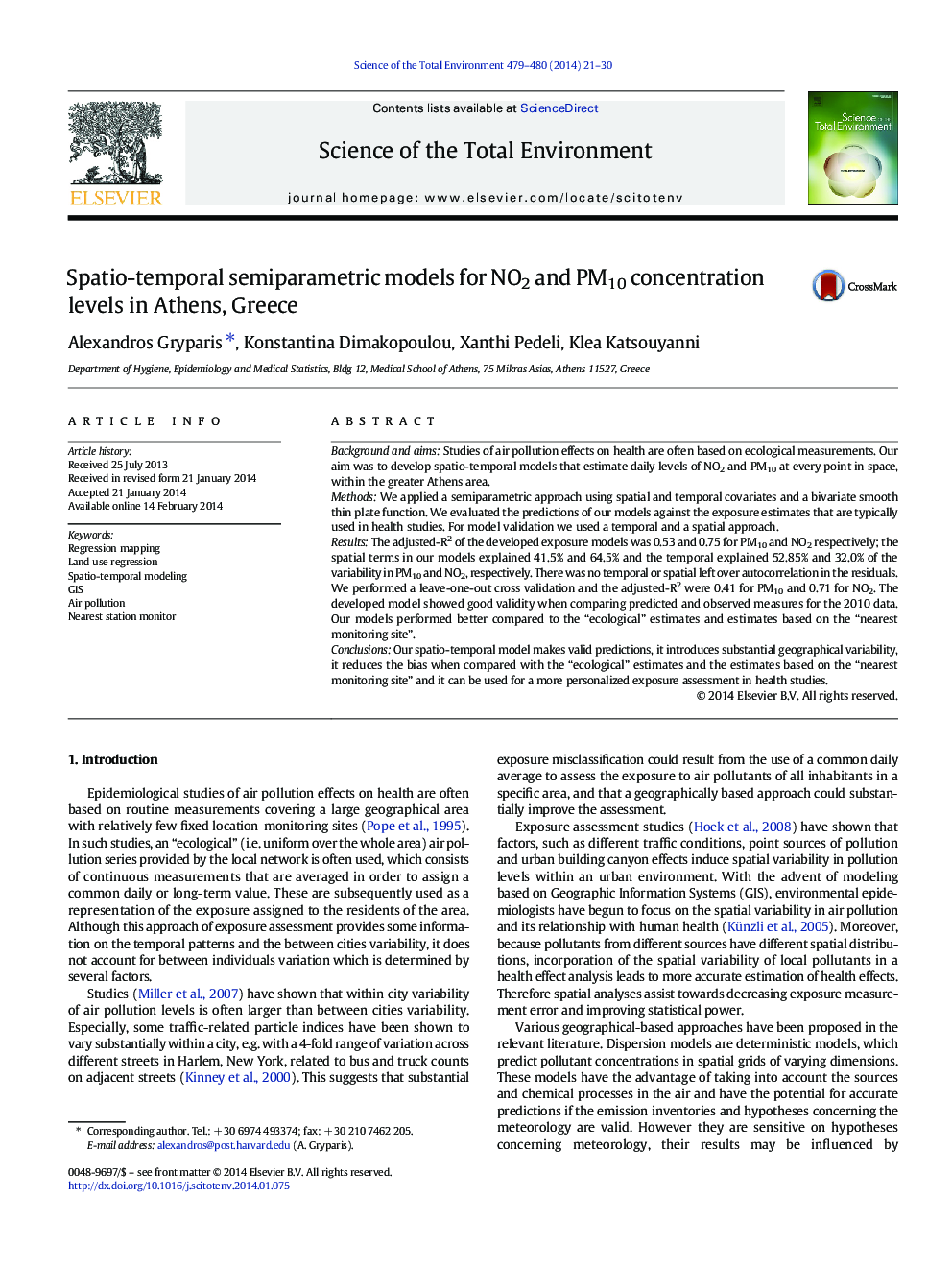| Article ID | Journal | Published Year | Pages | File Type |
|---|---|---|---|---|
| 6330962 | Science of The Total Environment | 2014 | 10 Pages |
Background and aimsStudies of air pollution effects on health are often based on ecological measurements. Our aim was to develop spatio-temporal models that estimate daily levels of NO2 and PM10 at every point in space, within the greater Athens area.MethodsWe applied a semiparametric approach using spatial and temporal covariates and a bivariate smooth thin plate function. We evaluated the predictions of our models against the exposure estimates that are typically used in health studies. For model validation we used a temporal and a spatial approach.ResultsThe adjusted-R2 of the developed exposure models was 0.53 and 0.75 for PM10 and NO2 respectively; the spatial terms in our models explained 41.5% and 64.5% and the temporal explained 52.85% and 32.0% of the variability in PM10 and NO2, respectively. There was no temporal or spatial left over autocorrelation in the residuals. We performed a leave-one-out cross validation and the adjusted-R2 were 0.41 for PM10 and 0.71 for NO2. The developed model showed good validity when comparing predicted and observed measures for the 2010 data. Our models performed better compared to the “ecological” estimates and estimates based on the “nearest monitoring site”.ConclusionsOur spatio-temporal model makes valid predictions, it introduces substantial geographical variability, it reduces the bias when compared with the “ecological” estimates and the estimates based on the “nearest monitoring site” and it can be used for a more personalized exposure assessment in health studies.
